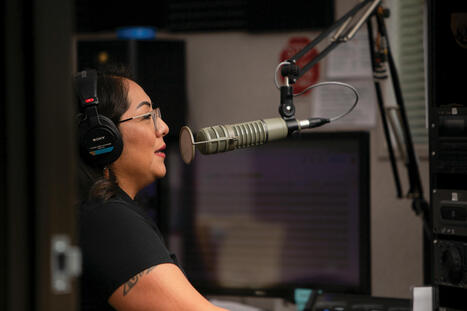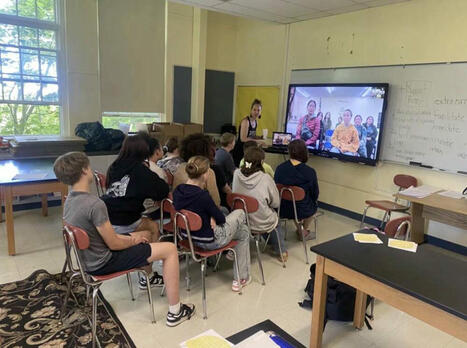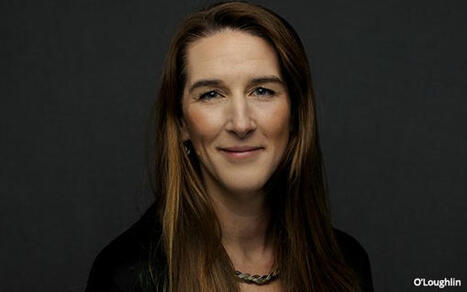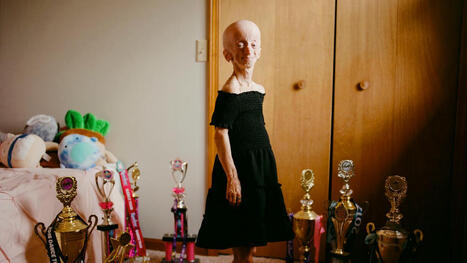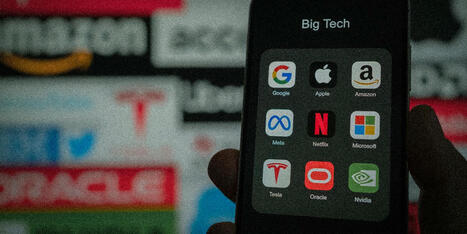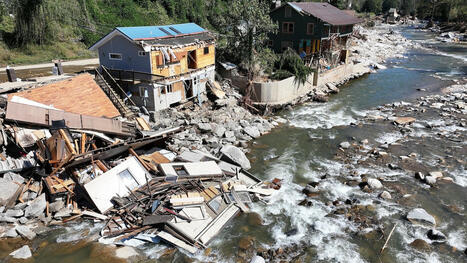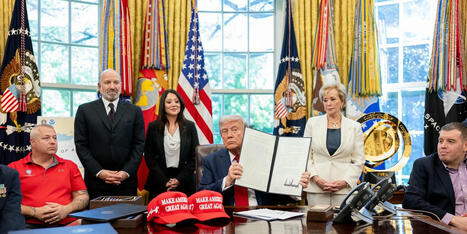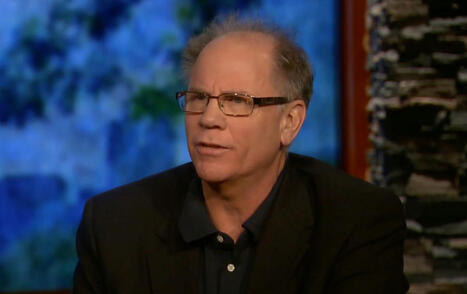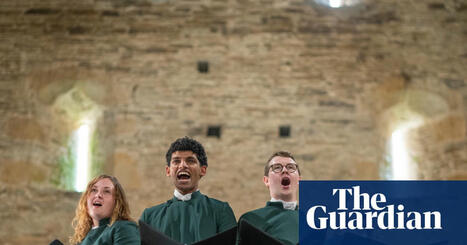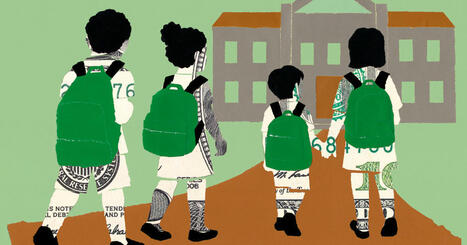 Your new post is loading...
 Your new post is loading...
Last February I wrote “Preventing ‘Legacy Loss’: The Afrofuturist Vision of pgLang” to document the emergence of pgLang, a multidisciplinary creative communications agency founded by Kendrick Lamar and Dave Free. Earlier today pgLang launched Project 3 Agency that provides a “creative direction, brand design, strategy, content creation, event planning and production service.” Project 3 Agency is part of pgLang’s creative ecosystem, which focuses solely on external client work, aiming to scale creativity and fill a gap in the agency landscape. According to Free, the “3” (in Project 3) stands for pillars of storytelling: beginning, middle and end. "We were seeing companies we admired, but the storytelling was lackluster. And a lot of it is because the agency motto became a turnover business of more, more, more. Sometimes that’s great, you need that. But [the storytelling] also has to help people. It has to change the world. It has to latch onto people." — Dave Free
Officers with the federal agency lobbed so many toxic chemicals at protesters, a nearby school was forced to leave.
As NASA grapples with major proposed budget cuts and losing some of its most brilliant minds, America’s willingness to look outward is also at risk.
As public media is threatened after cuts from Trump administration, Indigenous radio also face threats to how they preserve and grow language. Samantha Honani Molina was about 20 when KUYI-Hopi Radio first came on air. She was attending college, hours and miles from her home village, and every time she tuned in, she felt connected, hearing her community’s songs and language. “I was struggling to find my place, because when you’re coming from the rez, you’re trying to find your space in a city or town, and there’s nothing of who you are and where you come from. You feel the sense of, not lost, but just uncertainty, and missing home and stuff like that,” said Molina. “By hearing language on the radio, it brings the sense of cultural identity that almost highlights and strengthens that — no matter where you are, even here at home. If you don’t hear yourself represented in large spaces, you’ll just get enveloped and folded into the mainstream.”
SHELBYVILLE – A local church is urging its members to permanently remove books from the Shelby County Public Library by checking them out and never returning them. The books portray gay characters and historical figures or explore LGBTQ+ themes. Pamela Wilson Federspiel, who has been director of the library in downtown Shelbyville for 34 years, says the action is tantamount to “stealing.” But three leaders of the Reformation Church of Shelbyville defend what they call an “act of civil disobedience.”
Provincetown and the Bearing Sea coastal village of Mertarvik are just about as far away as two places can be in the United States. But students in both communities have found one big piece of common ground — growing up in a rapidly changing climate.
I recently saw an article about artificial intelligence that expounded on what is wrong with the technology. I was teaching a pre-college “Creative AI & Design” course for high school students and we talked about issues, the benefits and harms of generative AI, which is a subset of machine learning and deep learning or what some refer to as AI 2.0. One of the main issues author Kim Crawley has is climate change — the ongoing increase in global average temperature — that has an increasingly large impact on the environment. Crawley quoted climate change activist Greta Thunberg who addressed the United Nations in 2018: "Our civilization is being sacrificed for the opportunity of a very small number of people to continue making enormous amounts of money. Our biosphere is being sacrificed so that rich people in countries like mine can live in luxury. It is the sufferings of the many which pay for the luxuries of the few." There is no argument from me that climate change is a ongoing concern (and it should be for everyone). However, I do want to counter the notion of generative AI systems, which currently represent only a small fraction of data center workloads, being the whole problem. Recently, Grantable published “What is the environmental impact of AI?”, which explores the energy consumption and environmental impact of AI and data centers, massive warehouses containing the actual hardware that runs our modern digital infrastructure. The article references a recent study that notes that AI systems emit between 130 and 1500 times less CO2e per page of text generated compared to human writers, while AI imaging systems emit between 310 and 2900 times less CO2e per image than humans.
A hidden world beneath Antarctica is finally coming into focus. Scientists have uncovered hundreds of massive canyons buried deep under the ice—structures that could upend what we know about ocean currents, melting glaciers, and rising seas.
A 500-year-old human hair in a rare khipu challenges the long-held idea that only elite men created these knotted records in the Inka empire.
More and more universities are bringing in corporate-style marketing chiefs. New research shows what they’re gaining – and where the returns fall flat.
BARNSTABLE/NANTUCKET – State officials recently announced the award of $3.3 million in literacy grants for 25 school districts and collaboratives through the Partnership for Reading Success –…
As CEO of youth branding ecosystem SuperAwesome, O'Loughlin is on the front lines of the AI battle to win the hearts and minds -- and build intimate relationships -- with child users.
Teen-agers with progeria have effectively aged eight or nine decades. A cure could help change millions of lives—and shed light on why we grow old.
|
How do you tell a grizzly bear apart from a black bear? Black bears are a nuisance to any camper: they love your garbage, and if you don’t suspend it high above the ground, you may be in for a rude awakening when one comes lumbering around your campsite in the middle of the night. But they’re not going to kill you, and probably won’t even take a swipe at you. A hungry grizzly bear fresh out of hibernation, though, is quite another matter. So it’s critical to know which bear you’re dealing with, and plan your response accordingly. This metaphor came irresistibly to mind as I listened to the deliberations of the Age Verification Summit convened earlier this month in DC. In the wake of a landmark Supreme Court decision upholding states’ rights to require age verification for accessing pornographic websites, we assembled 30 of the country’s leading child online safety experts, constitutional lawyers, and technologists to map the path forward to a new internet—one with age-gated spaces and experiences, like the physical world. Before us loomed a complex thicket of what social theorists call a “wicked problem”: how to protect children from the myriad harms of early exposure to the digital world, when the portals to these harms are so numerous, so interconnected, and have become fundamental communication and indeed education tools that everyone—kids and adults—rely on.
A National Aeronautics and Space Administration (NASA) pilot program will utilize citizen science to help expedite hurricane disaster recovery. The space agency -- along with the Globe Program, a global science and education program -- is spearheading its new Response Mapper program, which will use before-and-after photos submitted by the public to track conditions on the ground. Through the summer and fall, NASA is inviting the public to participate in the program, especially for those who live in the Southeast, where many tropical cyclones can have an impact.
Trump’s enablers must pay a political price for increased costs of back-to-school essentials, cuts to public education, and embracing child-endangering AI.
On a Friday evening in Emma, North Carolina, an unincorporated community west of Asheville, noise echoes across the Porvenir Community Center. Young children play in one room, laughing and shouting in Spanish and English. In the next room over, around 15 adults and children talk and sing in a different language – Hñähñu, an Indigenous language from the Mezquital Valley of Central Mexico. Families sit together, leaning over textbooks and taking notes as the teacher, Abel González Bueno, writes example sentences on the whiteboard. At the end of the class, González leads his students in a traditional folk song. He says that music can be a great teacher, especially for his adult students who grew up speaking Hñähñu. “I hear this song and I remember when my grandmother would whistle it. So it transports [the students] in a way,” he told the Daily Yonder. “And I think that it’s also emotional, because they might have been in this country for twenty years without hearing anything like this.”
There’s been a lot of recent research showing how social media platforms are affecting young people’s mental health. But it tends to look at teens broadly, rather than considering where they live. A new survey suggests there may be differences in the ways kids interact with social media depending on whether they live in urban or rural areas. The survey, run by a California nonprofit called Hopelab, looked at 1,274 teenagers across the U.S. to understand the wellbeing of rural young people and their relationship to digital technology. When it came to tech, the survey found some notable geographic differences.
As I started writing this piece on the flight back to occupied Washington, D.C., I found myself wishing, as I have many times over the past five months, that Bob was still here to help us find our way out of this mess. But his work and his words do offer us a guide. “Change the media to change the world.” Penn Professor Victor Pickard, one of Bob’s former graduate students and now the board chair of Free Press, spoke at the Saturday ceremony. “Bob was that rare scholar for whom it wasn’t enough to study the media as it is. For him, the point of studying media was to change it, to serve social justice and democracy, not just corporate profits. He wanted to change the media to change the world.”
Eyal Press reports on Columbia University’s adoption of the I.H.R.A. definition of antisemitism, and on how such a definition could threaten both academic freedom and Jewish students.
There’s a reason these works have influenced great contemporary artists such as Jenny Saville. It just took me a while to truly see it, says Guardian columnist Rhiannon Lucy Cosslett
Almost five centuries ago a community of monks in the West Country of England gathered to sing, imploring their God to help them endure the challenges of medieval life. Thanks to an extraordinary discovery of music that survived Henry VIII’s dissolution of the monasteries in the early 16th century, the songs created by the Buckland Abbey monks were ringing out again across the hills and woods of the Tavy valley in Devon this weekend. The themes are heavy – the threats from disease and crop failures, not to mention powerful rulers – but the polyphonic style is bright and joyful, a contrast to the sort of mournful chants most associated with monks.
The right-wing educational resource is available for classrooms in ten states and wants to go ‘toe-to-toe’ with PBS Kids. Will teachers go for what the company has described as indoctrination?
This summer, kids all over America are going to be playing sports on fields of artificial turf—no leaves of grass, just rubber crumbs. As I report in my new book Raising Healthy Kids: Protecting Your Children from Hidden Chemical Toxins, a US Olympic Coach kept a detailed list of her players who had contracted cancer, and it was long and disturbing, especially for goalies. But the few studies done to date have not found a connection. The advocates of artificial turf will tell you that it is proof that their product is safe. Here’s how I see it. Every day, most kids in America are being exposed to a ton of toxic chemicals, and it is the total load that will harm them by impacting their IQ and learning ability, as well as increasing their risk for infertility, diabetes, obesity, and endocrine disruption. Praise the maker if your family is free from these heartbreaks. But take action too and keep your family healthy. Because it is happening, even if you don’t think it is.
An investigation by ProPublica and The Texas Tribune found more than 60 instances of nepotism, self-dealing and conflicts of interest among 27 private schools that likely would have violated state laws had the schools been public.
|



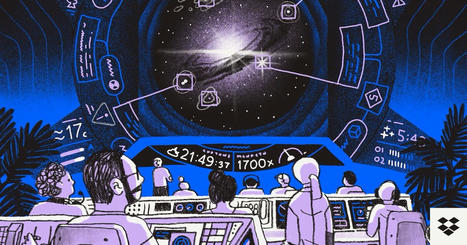


 Your new post is loading...
Your new post is loading...


